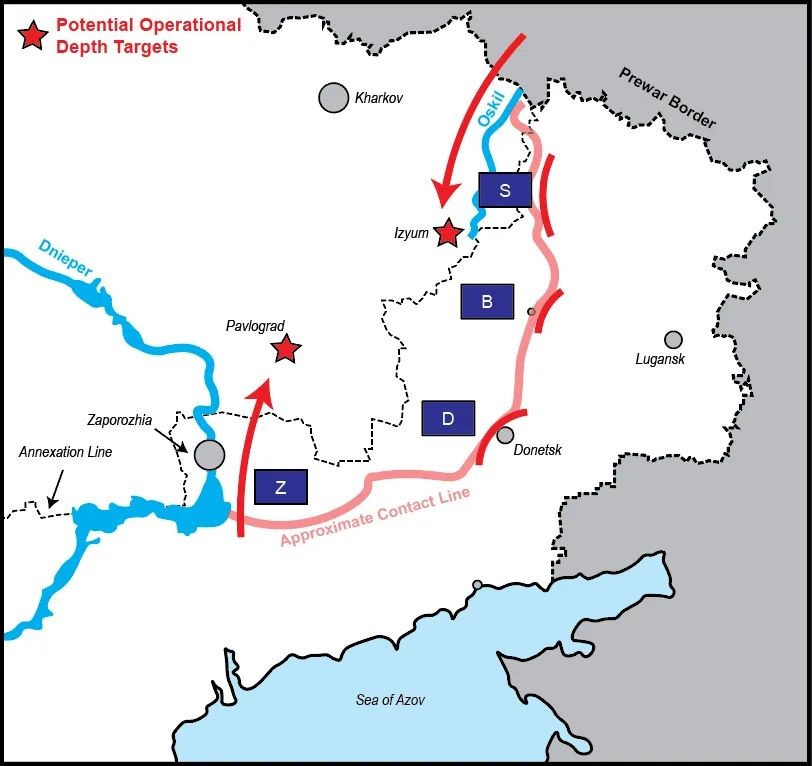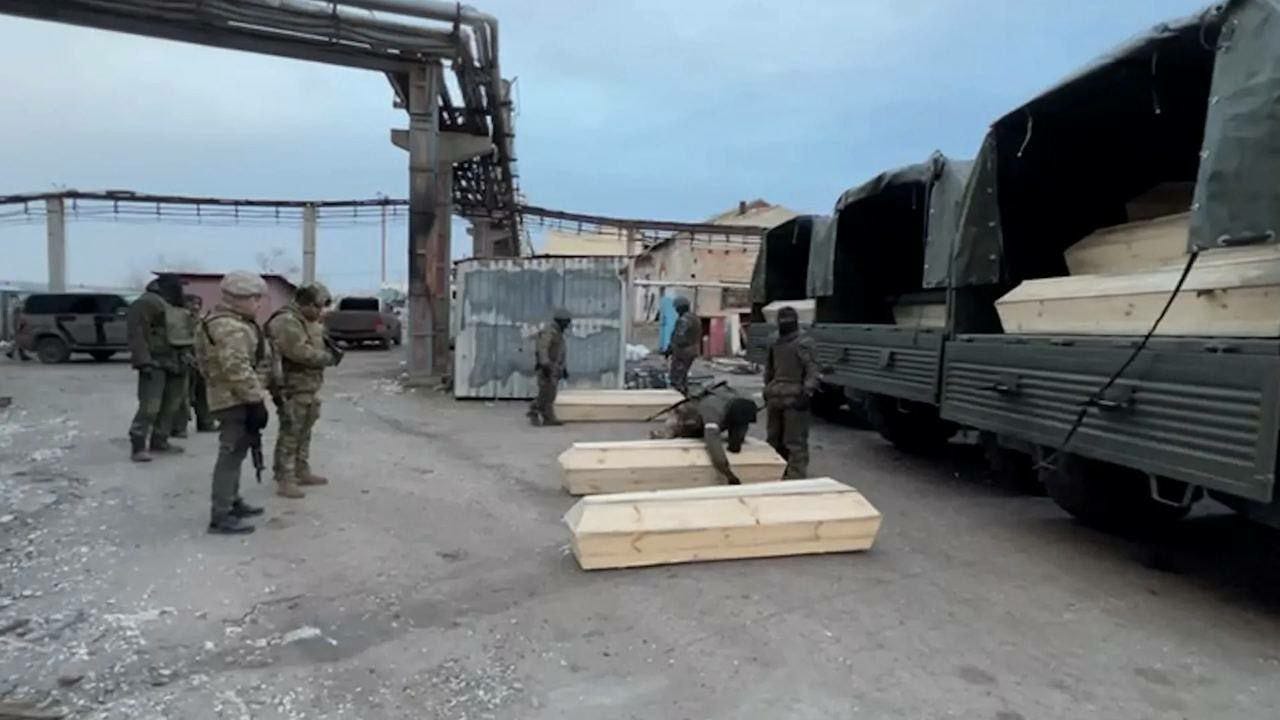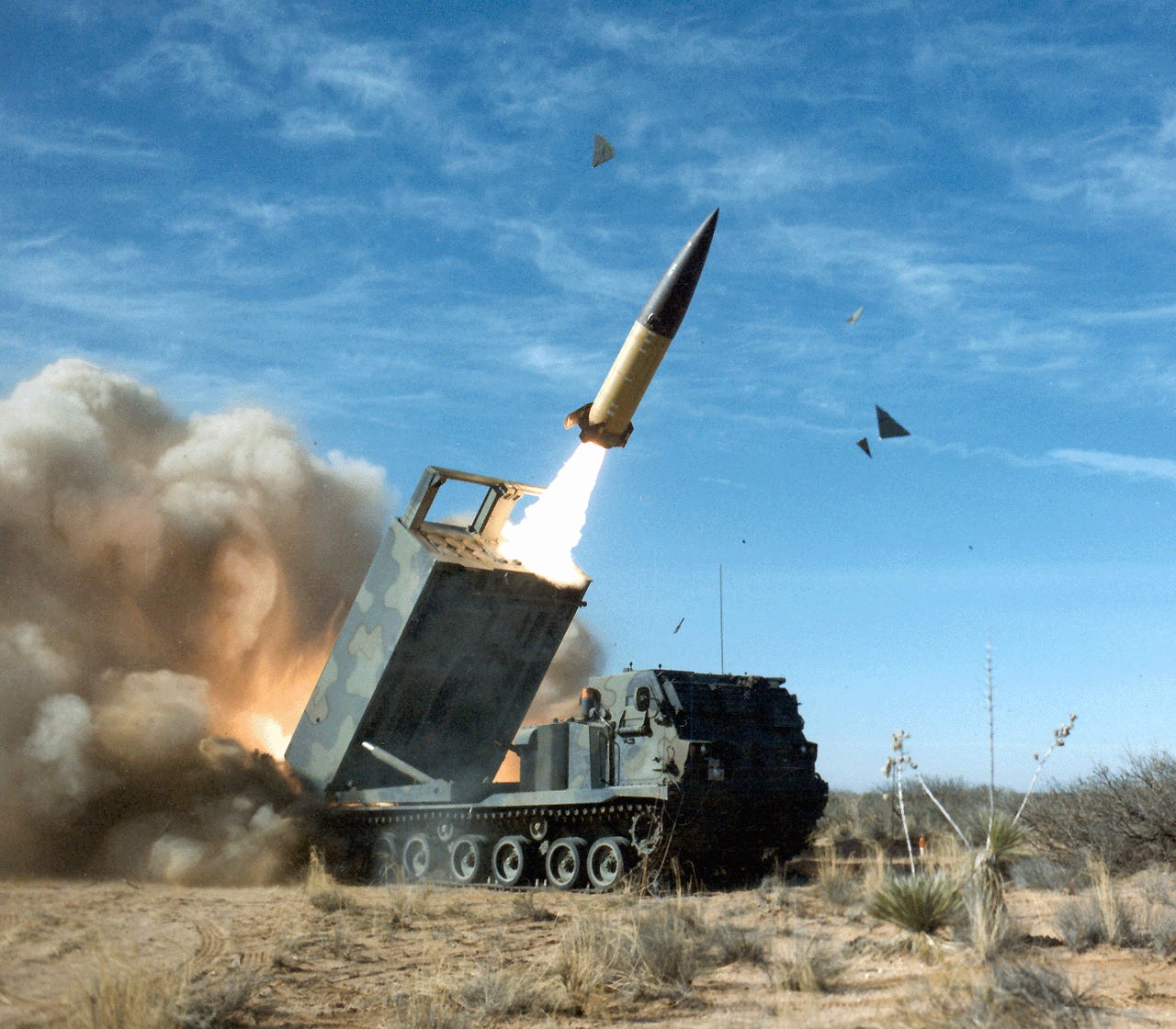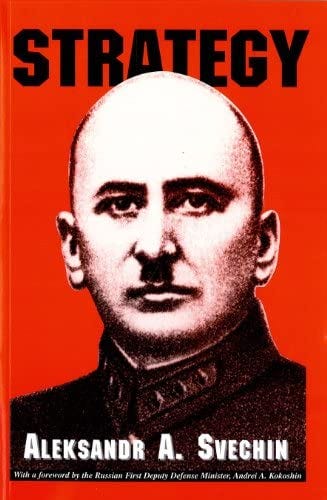Big Serge’s Big Surge
Serge vs Aleks
I read these days often analysis of fellow writers, that are creating one map after another with nice big arrows. Usually accompanied by sentences like “The Russians will come from X and do Y in Z and then breakthrough to A only to create then a big cauldron around B”. Unfortunately, I think that many confuse the current technological possibilities with these of the 1940s.
Aleks. Black Mountain Analysis
It is indeed a mistake to compare the SMO to WWII or WWI or any previous “war”. It’s not “war” as you thought you knew it. Technology has changed both the possibilities of the large-scale violence that is military conflict, as well as our definitions of it.
Did Big Serge make that mistake of comparing Ukrainian War 10.0 to previous “wars” in in his recent, very influential article Russo-Ukrainian War: The World Blood Pump, which impressed such notables as Larry Johnson and Alex Mercouris …umm…bigly?
Read it and decide for yourself.
Serge is a military historian who writes compelling analyses of all kinds of military events from ancient times to the modern and premodern age, including the American Civil War and WWI – and now the Ukraine, NATO’s war. His article is erudite and compelling — but I would suggest that Black Mountain Analysis’ take is even better.
I hope you will support both Serge and Alekys so they can keep on writing.
Arrow and Lines vs Areas and Theaters
Big Serge makes the point that I made previously in my articles on Bakhmut and Soledar— and which most people agree with—that these two towns (once just known for salt) are the keys to taking the rest of the region. This is how Serge sees it.
Arrows.
And Lines.
Now look at Aleks’ map.
Areas.
And Theaters.
Serge draws a traditional map indicating possible strategic offensives – hence the arrows.
Alek’s map is different —it defines “theatres” of operation.
And you can see how the cities, towns and villages in the area are connected as a part of a densely populated grid.
Keep in mnd that a theatre is not just the stage, but the auditorium, the audience, the set, the stagehands, staff and the backstage. You think the theater is the stage because that’s where your attention is directed— but the performance there could not happen without the rest.
Networks and Grids
Now “areas” ….
In terms of “areas” it is the connections that matter—the Network.
What I have called Ukraine’s “Maginot Grid” is not set up as “lines” in any conventional way – not like static trenches at, say, Verdun in WWI, which Serge cites in his article -- but as nodes— some more important than others or better defended—all connected by-- and dependent on— roads and railways, or sometimes, in the case of Bakhmut and Soledad, by tunnels.
The nodes are static but dependent on movement of men and supplies through a logistical network of roads, railways, river routes, even tunnels.
Those connections are not lateral—but also horizontal and at angles.
It is not a difficult concept.
The Body of War
Visualize the human body.
Organs in the body depend on a complicated network of blood vessels and nerves, and a network of arteries, veins and nerves—an organic matrix.
Interfere with the network that connects the organs to the rest of the body, and they malfunction or even die.
In the human body, some organs are more important than others. You can do without a spleen or a gall bladder but not a liver or heart. The same applies to nodes. Some are more important. At the beginning of the war, one such vital node was Mariupol, as the gateway to Crimea. Again, connections count.
My ASD non-linear mind much prefers Alek’s organic concept, rather than Serge’s geometry. Context matters.
Problems and Solutions
Aleks shows both the problem – a kluge of nodal defenses—and the solutions—and the to:
a.) identify which nodes are important.
b,) control supply and reinforcement:
c.) destroy men and materiel.
In the last two cases, the Russians take advantage of
a.) a 10:1 advantage in artillery and armor
b.) a huge advantage in electronic warfare, including the “Penicillin” system .
c.) air superiority
d.) logistical support
e.) support from local populations
f.) the stratetic stupidity of their opponents who have sacrificed almost 200,000 KIA.
Keeping in mind that this is a war against what was NATO’s biggest and best equipped army, with a 4:1 advantage in manpower, Russian success (overall) should be a warning to the Empire. Should be, but probably not. As Larry Johnson points out in a recent article.
At some point, UAF resistance in theaters 1, 2, and 3 will just collapse. Then will come 4 and 5. There will be holdouts as there were in Azovstal in Mariupol in big cities like Kharkov, Zaporozhe, Nikolaev, and Odessa. But cut off and isolated in what are, in effect urban prisons, the Banderites will give up before they starve.
For the time being, you won’t see any “Big Arrow” offensives, however, as in say, Desert Storm.
As Napoleon said:
Never interrupt your enemy when he is making a mistake.
Aleks writes:
Don’t get me wrong. Russia can break all of this resistance. But it would need to calculate far bigger losses, then would be needed, to conclude this war. Since Russia is in no hurry, but the West and Ukraine is, I don’t see any reason, why Russia should do this.
To conduct such offensives, Russia would need to calculate with casualty rates of 20-30%.
Don’t get me wrong. I don’t say, Russia won’t move in with large columns of tanks and logistics equipment. But my personal assumption is, that this will first happen, as soon as the Ukrainian forces starting to crumble and starting to retreat under a collapse. Then these big Russian formations will move in.
The Russians could only reduce casualty rates doing what the US did in Desert Storm — shock and awe. The result would be thousands and thousands of dead civilians as in Iraq.
Far better for the Ukrainian forces to “crumble” first — but not just that —for the government to collapse also. We can see that happening already.
Cracks are appearing. Officials resigning or being demoted. Mysterious deaths. Infighting within the security services. Increasing discontent about religious persecution of the Orthodox and universal conscription and death rates.
Western Ukraine is a dead man walking. The “war” continues just because the Empire has not found another one — not yet.
Zelensky’s assets are said to be just short of a billion dollars. Once he reaches the magic number, he may just run for Beverley Hills and sleep on Sean Penn’s couch.
I wrote earlier that Soledar and Bakhmut are not important in and of themselves. They could, of course by be passed if the RF wanted to attack Seversk, Slavyansk and Kramatorsk, but I doubt the RF wants to leave concentrations of UAF forces in their rear.
Right, now these two towns are death pits. As a result, UAF losses are increasingly unsustainable and the morale in the UAF is deteriorating, with some units refusing to fight, commanders fleeing, and arbitrary executions by Banderite death squads.
Zaporozhe
You will notice that while the RF has advanced in the Zaporozhe region, taking Orikhiv (pop. 13,000) and other villages, this is not a “big arrow” offensive; rather it is positional movement.
The RF is unlikely to waste resources on taking Zaporozhe City (pop. 700,000), whose defenders are in a state of total funk, fortifying factories and the like. Previously, there was “chatter” about a planned UAF offensive south to Melitopol, even to Crimea, despite lacking armor, artillery, air power, and all the stuff they would need. Presumably the threat was supposed to draw Russian troops away from other areas. No more. The defenders of Zaporozhe are in a state of total funk, fortifying factories and the like, Azovstal redux.
In the meantime, the Russians are destroying infantry brigades in the area that lack armor and artillery— forcing the UAF to draw troops in for other areas. Hoist on your own petard - literally.
More Ukrainian men are going home in boxes, which the Ukrainian government may or may not count since they would don’t want to pay survivor’s benefits for KIA when they can write them off as “missing in action” (MIA).
Bakhmut and Soledar are right in the center of the Maginot Grid. Once these towns are neutralized, the Russians have clear access to highways to north, east and west -- to other “nodes”, which are not as well defended. The Russians have multiple options for movement. Of course, the Russians could bypass partially surrounded Bakhmut (Artomovsk) with Soledar under their control, but it is simpler to wear down the UAF for the time being.
Putin is not in a hurry. The longer the SMO goes on, the more mistakes the Empire makes, as its desperation spurs it to somehow escalate., with each escalation another brick in the wall of shame and blame.
No, ATACMs—second rate Iskanders— won’t make any difference, other than to mobilize even more public support in Russia for the war.
No, Abrams also won’t make a difference. Although the Russians have said that the use of DU munitions would be (to them) the equivalent of using “dirty bombs” and prompt severe “retaliation”. Read my lips. I doubt NATO wants to risk it.
Don’t expect huge battles like Verdun or the Somme. Russian strategy is far more versatile — and creative.
Time: Russia’s Friend
Wars of attrition take time. Wars requiring maneuver over distance require time, too - for very careful planning.
But time is Russia’s friend.
Larry Johnson points out that Americans just don’t understand war, never having fought an “existential” war. The Civil War was not existential for the Union—only for the Confederacy.
The Confederacy is said to have lost. Perhaps so, But did the South?
Seems there are still two Americas and nothing much improved for black people for a century or so.
I digress.
Russian Strategy vs American Reactionism
Despite American confusion about war, the Russians are singularly focused.
Existential wars require strategy, a clear understand of military operational art. Something that Americans have shown little interest in or talent for, if we consider Korea, Vietnam, the Middle East, and now Ukraine.
The most important Russian military strategist, “Russia’s Clausewitz” Alexander Andreevich Svechin said war is an art, constantly changing.
You make rules in order to break them and create new ones. Changes in Russian strategy, taken as signs of weakness and failure by the West are quite the opposite: the demonstrate situational awareness and flexibility—and also originality. The constants are defined by clear goals, both short-term and long term.
Western “strategists” just look back to WWII and fake history. They don’t like looking forward. Theirs is an inflexible military orthodoxy, ruled by doctrine.
Putin’s stated goals—demilitarization and denazification, activated first by restoration of Eastern Ukraine’s prewar boundaries. He also clearly has unstated goals contingent on the objectives of the SMO: nation building, the destruction of NATO, the re-invention of the Russian military, multipolarity and the like. He has a vision of the future.
Challenge begets creativity. The Russians will find new ways to win because they have to.
The US never looks beyond the next media cycle.
Putin wants Ukraine alive and well at the end – recovered— as a renewed Ukraine literally Novorossiya . It is best therefore if Western Ukraine self-destructs.
Like a samurai, it will cut open it belly and wait for its second — NATO— to cut off its head.
But Putin is looking far beyond Ukraine.
Me…and YOU!
I am 76. Yes, I know—my profile picture, which is recent, looks younger. There is a reason my book is called "Ageing Young-- You're Never Too Old To Rock and Roll", the title given to me by David Bowie's lead guitarist and songwriter, Mark Pritchett.
In Canada, I have to carry a passport to prove I am over 60. You could do that too. If course, it helps to “on the spectrum”, like 90% of centenarians with the DrD4 R7 alleles gene. Sadly, the mortality rate for people with this gene set is LOWER on average, due to high-risk behaviors. BUT, if you survive to 70 and are healthy you can on …and on….
I write mostly about health issues, ageing successfully, cognitive issues like ASD—and… umm…genius. (Oh, I wish! But I will have to learn to tie my shoes first). I am pretty much “dys” everything. You will notice lots of typos. Dyslexia. Correct me please.
But recently, I have turned to geopolitical issues. People like me — and likely YOU— if you are subscriber—tend to see things differently. Not “I think therefore I am” But “I see therefore I think there I am”. First you must see with your own eyes.
So I gave up my Fulbright for PhD work at Harvard, which was about “thinking” not “seeing” to work as I was a stringer in Southeast Asia during the Vietnam War. Then I was in Korea. And after that in Japan where I studied martial arts and Buddhism and did a lot of things: union organizer, writer, broadcaster, media analyst, beer and pizza. That’s the “spectrum” fer yah.
ASD is not one thing. There are a zillion variations. And in human evolution these were survival characteristics. People with them tend to “see”. They make connections. They are contrarian. They question. Is that YOU? Very likely you don’t consider yourself “left” or “right” or even in the “middle”. You are just you. Cognitively ambidextrous.
Most people are knockoffs. But each of YOU is an original.







I have been saying for a very long time now that time is key part of the Russian strategy. They are in no rush to bring the operation to a close, they are not working to any arbitrary timeline, and they are not driven to 'seize' territory. They are western priorities and, as the NATkranians are pursuing them mindlessly, they have made themselves prisoners of Russian strategy. And they're losing badly.
All analyses, even the good ones like Big Serge, are sometimes constrained by reference to anachronisms. I have described the Russian approach as a new Verdun too, but it's not a literal analogy as war fighting technology has changed in more than a century. The analogy is one of drawing the enemy to defend a salient of politically strategic importance which becomes a death zone, bleeding the enemy white. This is truly what is happening in Bahkmut, even if the analogy isn't a perfect fit. The NATkranians will continue to pour blood and treasure into the hole and the Russians will keep smashing it until the whole rotten structure breaks.
To add on to a good article, Julian, may i also note the bigger picture too few are asking: what does a Russian win look like given all the players involved?
One major aspect is certainly the requirement that a nuclear exchange be avoided if at all possible. Although unthinkable a few years ago, we've seen far too many DC swamp rats openly musing about the mythical tactical nuke and winning a nuclear exchange. So the possibility must be near the top of Russia's concerns.
To that end, Russia must avoid the kind of large scale, big arrow, massed formation attacks dreamt of by the armchair strategists. Why? Because images and news of massive tank formations overrunning Ukie defenses and rolling towards Kiev (and Lviv?) is *exactly * the kind of visual the DC swamprats need to sell panic and all out war to the sheeple in the West. The DC rats are praying for a nice, juicy Russian offensive that can be parlayed into direct war. And once that starts and NATO units are being inevitably obliterated, the temptation to throw a nuke at the eeeeevilll Roooshians may be unbearable.
So, Russia's current approach is slow and boring and as bereft of any material for US propaganda as you can get. By desugn. The only winning scenario i see for Russia that eliminates this escalation danger is a wholesale capitulation by Kiev. A collapse. Russia may have to move in w peacekeepers of its choosing to restore order and aid to civilians, but DC won't have any pretext for intervention at that point.